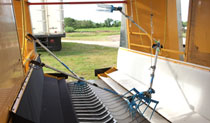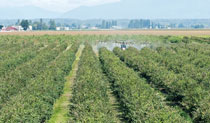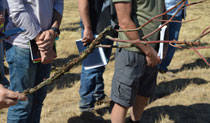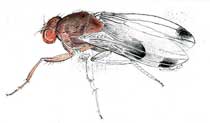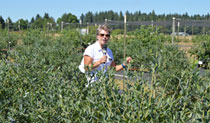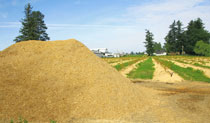Crown Gall Appearing in Blueberry Plantings
A disease that appeared seemingly out of nowhere is threatening blueberry plantings in Oregon, according to USDA Agricultural Research Service plant pathologist Virginia Stockwell.
In a presentation at the 2018 Blueberry Field Day, Stockwell said she has seen crown gall extensively in the Draper variety, occasionally on Duke and has heard reports of it in Liberty.
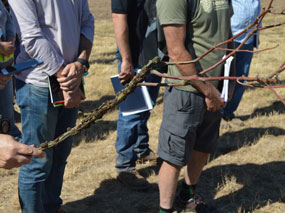 |
|
|
According to Oregon State University associate professor and blueberry Extension agent Wei Yang, the problem first appeared last year, before growing in size this year.
“I think it is concerning,” Yang said, “because in some fields it is almost 100 percent.”
Yang said he believes the disease is being moved through soil and through pruning and mechanical harvesting.
The disease needs a wound to enter a plant, Stockwell said, then injects its DNA into plant cells causing the gall, a wart-like growth two inches or larger in diameter.
“Sometimes it is an obvious growth,” Stockwell said. “You can see it walking down the rows. In some fields, the galls are harder to spot. If you look closely you can see it, but it is not obvious just walking down the road.”
In one field Stockwell visited in early July, 100 percent of the plants were infected in a row, she said. “But it wasn’t that obvious until you got down on your hands and knees. At the bottom of the plant, the bark was lifting at the soil line and you could see a bunch of new white or green galls growing under the bark.”
Caused by the soil-borne bacterium Agrobacterium tumefaciens, crown gall is a common disease of woody shrubs. The only cure for the disease in blueberries is to remove the infected canes, Stockwell said.
“It is a little sensitive to copper, so you might try a copper-band spray, but I can’t guarantee that is going to do anything,” she said.
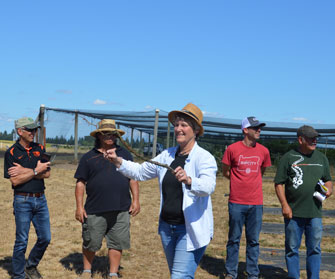 |
|
|
Stockwell, who first became aware of the disease in blueberries in February, said she is isolating Agrobacterium to try and determine what kind of Agrobacterium is infecting blueberries and trying to find compounds to which it is sensitive.
“Right now,” she said, “if you see any crown gall in your fields, cut out those canes really low and make sure there are no white balls underneath, and then take them out and burn them.
“I know that is expensive, but if you leave them in the aisles, they will be flailed and then cause more infections,” she said. “And make sure you take a look before you send your pruning crews out. I have been in fields where someone pruned right through some galls, and then those pruners were probably contaminated. If you have crown gall, you might think about having two sets of pruners and have one setting in bleach and just keep rotating them.”
While the disease is only now becoming apparent in blueberries, Stockwell said she suspects crown gall has been here since 2016. “I saw some gall that looked older (than one-year old),” she said of this year’s sightings. “I think a lot of these infections may have happened in 2016 when we had that long, wet spring. Bacterium love water and the canes were wet for a long time.”
She added there is still a lot that researchers don’t know about the disease, including its effects on yield and its long-term persistence.
| FALL 2018
|

